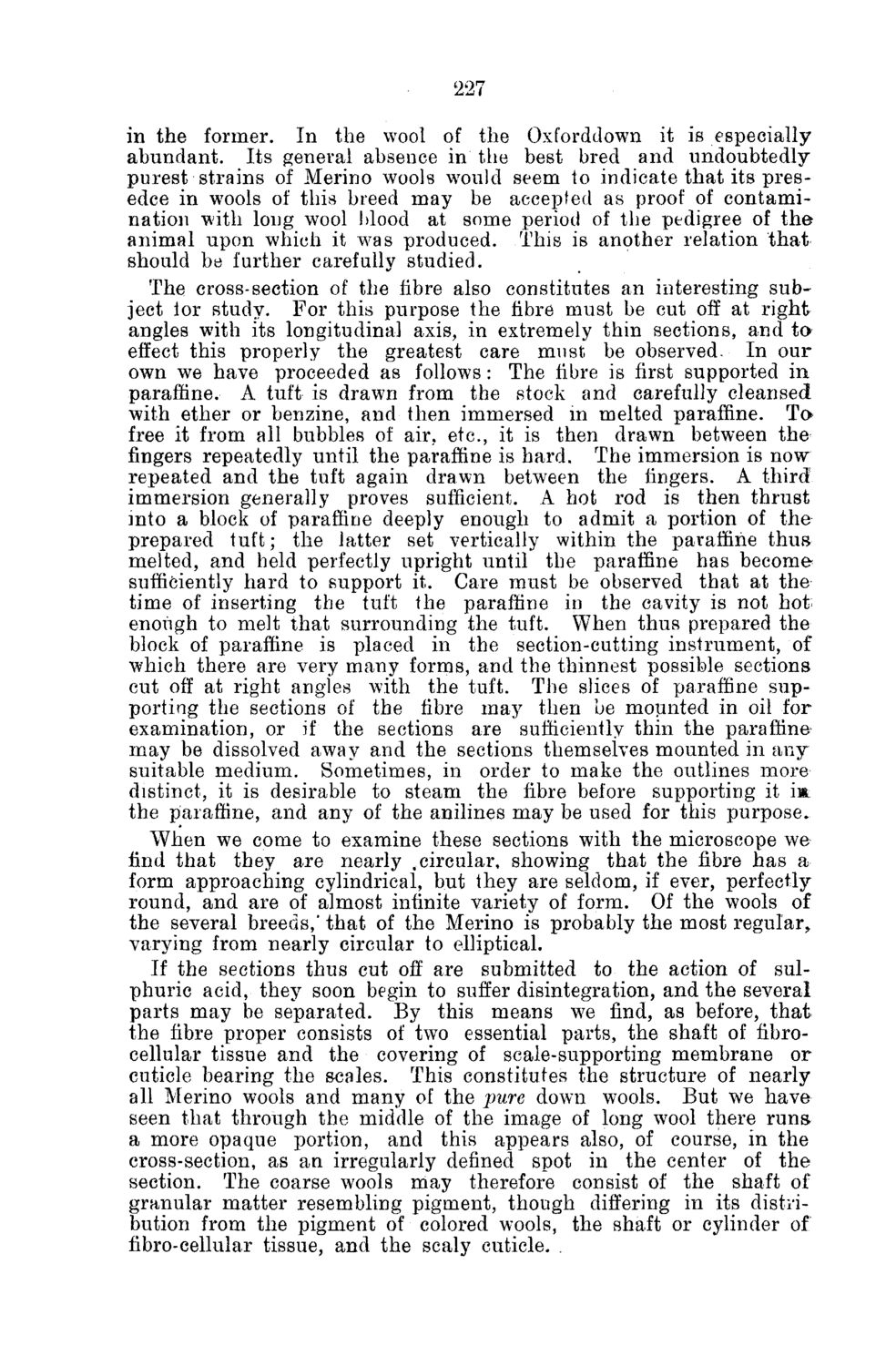| |
| |
Caption: Board of Trustees Minutes - 1886
This is a reduced-resolution page image for fast online browsing.

EXTRACTED TEXT FROM PAGE:
227 in the former. In the wool of the Oxforddown it is especially abundant. Its general absence in the best bred and undoubtedly purest strains of Merino wools would seem to indicate that its presedce in wools of this breed may be accepted as proof of contamination with long wool blood at some period of the pedigree of the animal upon which it was produced. This is another relation that should be further carefully studied. The cross-section of the fibre also constitutes an interesting subject lor study. For this purpose the fibre must be cut off at right angles writh its longitudinal axis, in extremely thin sections, and to effect this properly the greatest care must be observed. In our own we have proceeded as follows: The fibre is first supported in paraffine. A tuft is drawn from the stock and carefully cleansed with ether or benzine, and then immersed in melted paraffine. To free it from all bubbles of air, etc., it is then drawn between the fingers repeatedly until the paraffine is hard. The immersion is now repeated and the tuft again drawn between the fingers. A third immersion generally proves sufficient. A hot rod is then thrust into a block of paraffine deeply enough to admit a portion of the prepared tuft; the latter set vertically within the paraffine thus melted, and held perfectly upright until the paraffine has become sufficiently hard to support it. Care must be observed that at the time of inserting the tuft the paraffine in the cavity is not hot enough to melt that surrounding the tuft. When thus prepared the block of paraffine is placed in the section-cutting instrument, of which there are very many forms, and the thinnest possible sections cut off at right angles with the tuft. The slices of paraffine supporting the sections of the fibre may then be mounted in oil for examination, or if the sections are sufficiently thin the paraffine may be dissolved away and the sections themselves mounted in any suitable medium. Sometimes, in order to make the outlines more distinct, it is desirable to steam the fibre before supporting it m the paraffine, and any of the anilines may be used for this purpose. When we come to examine these sections with the microscope we find that they are nearly .circular, showing that the fibre has a form approaching cylindrical, but they are seldom, if ever, perfectly round, and are of almost infinite variety of form. Of the wools of the several breeds,' that of the Merino is probably the most regular, varying from nearly circular to elliptical. If the sections thus cut off are submitted to the action of sulphuric acid, they soon begin to suffer disintegration, and the several parts may be separated. By this means we find, as before, that the fibre proper consists of two essential parts, the shaft of fibrocellular tissue and the covering of scale-supporting membrane or cuticle bearing the scales. This constitutes the structure of nearly all Merino wools and many of the pure down wools. But we have seen that through the middle of the image of long wool there runs a more opaque portion, and this appears also, of course, in the cross-section, as an irregularly defined spot in the center of the section. The coarse wools may therefore consist of the shaft of granular matter resembling pigment, though differing in its distribution from the pigment of colored wools, the shaft or cylinder of fibro-cellular tissue, and the scaly cuticle. .
| |